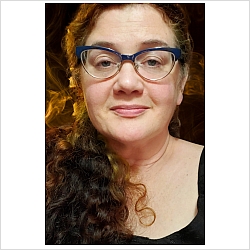My Approach to Helping
All of us, including you, were born with a core self that’s vibrant, inviolable, and indomitable. It’s still there inside, waiting patiently for each of us to work through the layers of difficulties, frustrations, and self-doubt that have accumulated over the years. When we do that difficult work, we’re able to live more from the core self and less from the wounded layer that so many of us have adopted out of painful necessity. Much of what we'll do in therapy is talk about your life to clarify your thoughts and feelings, heal the hurt places, and connect with your core self so you can live with more ease, truth, and self-love.
We'll talk about your visible, tangible life, but also about things like feelings, beliefs, patterns, dreams, imagination, art, relationships, wounds, and the ways your unconscious bubbles up into things that trouble you (or things that amaze you!). We'll discover together how they hinder or support your path to the core self that's waiting to embrace you. At the same time, we'll weave a web of mutual trust that is the strong foundation and container for therapy -- and this may end up to be the most important part of the work we do together.
It’s my honor to walk with people through the difficult terrain of the wounded layer – to help you heal the places you've been traumatized -- while discovering and making space for the vibrant, indomitable core self that's been waiting for you all along. It might be hard to believe it right now, but that core self is in there. Let's get started!
More Info About My Practice
Openness to your entire lived experience is a cornerstone of my work. I understand some people have long been excluded or discouraged from seeking therapy, and that the traditional therapy model has not always made room for the world's entire range of humanness.
I believe it is my job to help change that. Please know that no matter what you look like, what you believe, or whom you love, you are welcome in my therapy room.
One last note: I offer both in-person and virtual therapy (via secure, HIPAA-compliant portal). If you choose virtual therapy, you will need a reliable Internet connection and a quiet, private place to hold our sessions.
My View on the Nature of 'Disorders'
I don't diagnose much.
I will if you need me to, say for insurance purposes. But I'm less interested in how your life conforms to a framework laid out years ago by a committee of people who don't know you -- and much more interested in the details and nuances of your life, your heart, and your soul.
A diagnosis of fill-in-the-blank-disorder implies, first, that it's possible to neatly place human struggle into various discrete categories; and second, that there is a binary of order-vs-disorder and each one of us is on one side or the other.
Neither could be further from the truth.
Mental health is a landscape as huge and diverse as a continent or ocean. It's as varied as weather patterns, and it's prone to growth and risk -- like animals and trees. We can travel from one part of it to another in the space of a day or a year or a lifetime, passing through many different terrains. And in each new place -- each mood and mental state -- there is beauty and shadow, there is withering, there are new possibilities. We can get stuck, or decide to stay, or keep moving. We can go back or never return.
The idea of disorder also implies there is a prescribed order we should be pursuing. That might not be wrong on the surface: Happiness, relief, letting go, being in control -- these are all worthy descriptors for things that happen when we're feeling more ordered than dis-ordered.
But maybe it's not so vague or bald as all that; maybe it's more subtle: Maybe order is a fleeting moment of recognizing the truth you've been running from, or the ability to look yourself in the mirror without self-loathing more often than not. Maybe it's the shaky-but-growing capacity for self-compassion when you've been looking for it only from others. Maybe it's finally feeling a certain drive you've been longing for all your life. There are as many ways to bring order to a life as there are needles on a forest of fir trees.
But you won't find these "ordered" qualities in the Diagnostic and Statistical Manual (DSM), which defines mental health disorders and diagnoses. That's because the DSM is about dis-order -- but it's also because order looks beautifully unique in each of us. We might know the basics of how each one feels -- disorder might feel like disconnection, narrowness, fear, or deep sadness; order might feel like hope, peace, vibrant individuality, and deep connection in the very same moment.
But how we get there is not found in any manual. How we get there, and what the landscape looks like along the way, are particular to you.

